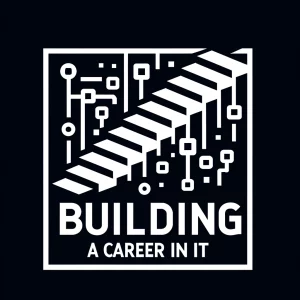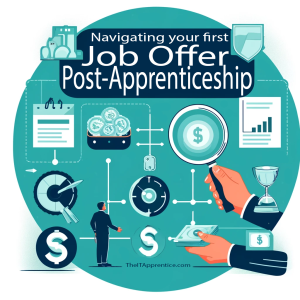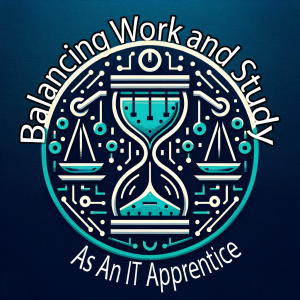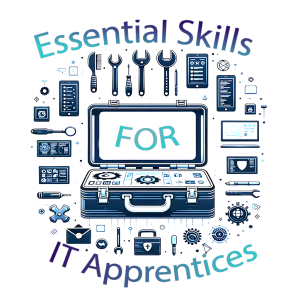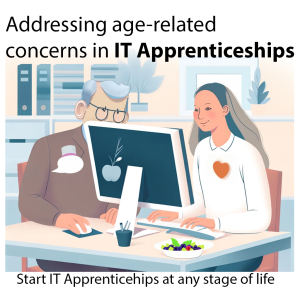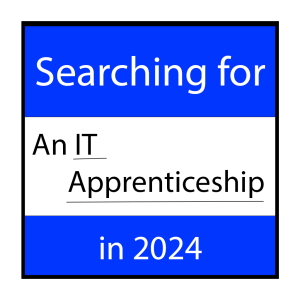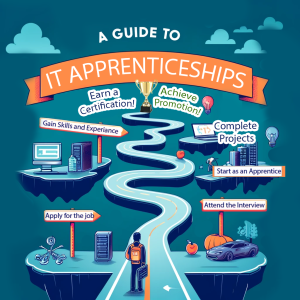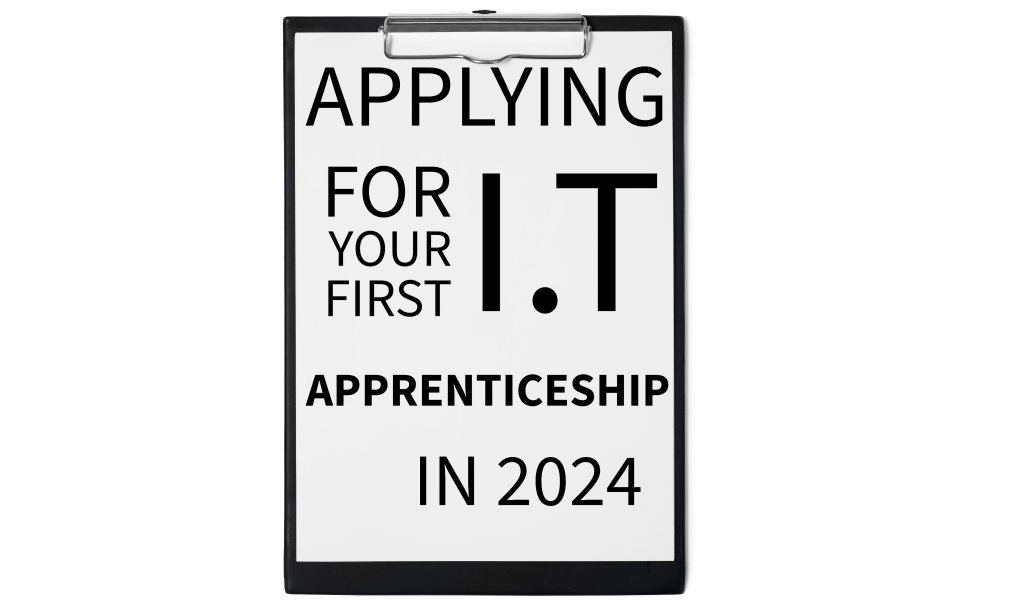
In our previous guides, “Guide to IT Apprenticeships” and “Searching for an IT Apprenticeship in 2024,” we established the significance of IT apprenticeships and outlined strategies for finding these opportunities in an increasingly competitive job market. As we move forward, it’s crucial to understand that securing an IT apprenticeship in 2024 requires more than just finding the right listing; it demands a well-crafted application that sets you apart from the crowd.
As someone who has successfully navigated the apprenticeship application process, I know firsthand the challenges and triumphs that come with standing out in a sea of candidates. Through a combination of fundamental application techniques and innovative strategies, I was able to secure my dream IT apprenticeship and lay the foundation for a thriving career in the industry.
In this guide, I’ll share my personal experiences and insights, providing you with a comprehensive blueprint for applying to your first IT apprenticeship. From understanding job requirements and tailoring your application to employing out-of-the-box tactics and leveraging automation, we’ll cover all the bases to ensure your application shines.
So, whether you’re a tech-savvy school leaver eager to kickstart your IT career or a career changer looking to break into the industry, this guide is your companion on the journey to crafting a winning apprenticeship application. Let’s dive in and unlock the secrets to success together!
Section 1: Basic Application Techniques
Understanding Requirements:
Before diving into the application process, thoroughly review the job description and ensure you meet the minimum qualifications. Pay attention to any specific skills, certifications, or experience required for the role.
If you find gaps in your qualifications, don’t be discouraged. Instead, use this as an opportunity to identify areas for growth and development. Consider enrolling in online courses or workshops to bridge any gaps and demonstrate your commitment to learning.
CV and Cover Letter Customization:
Tailor your CV and cover letter to match the specific requirements outlined in the job description. Highlight your relevant skills, experiences, and achievements that align with the apprenticeship role.
Emphasize your proficiency in essential hardware and software technologies, such as computer assembly, troubleshooting, and familiarity with popular operating systems and productivity software.
Use industry-specific keywords and terminology to demonstrate your understanding of the field and capture the attention of recruiters and hiring managers.
MS Learn Profile:
Utilize platforms like MS Learn to gain practical experience and showcase your skills to potential employers. MS Learn offers a wide range of interactive learning paths and modules that cover various aspects of IT, from fundamental concepts to advanced technologies.
Complete relevant learning paths and modules, and include your MS Learn achievements and certifications on your CV and application materials. This demonstrates your proactive approach to learning and your commitment to staying up-to-date with industry trends.
Standing Out:
In addition to traditional learning platforms, explore online resources and communities that offer hands-on experience and practical projects. Websites like Hack The Box and Codecademy provide opportunities to engage in real-world scenarios and develop your problem-solving skills.
Familiarize yourself with key systems and technologies commonly used in IT environments, such as Active Directory, Windows Server, and basic networking concepts. Demonstrating a foundational understanding of these systems can set you apart from other entry-level candidates.
Section 2: Advanced Application Techniques
CV Gap Analysis:
Regularly review and update your CV to ensure it aligns with the latest job requirements and industry trends. Conduct a gap analysis by comparing your skills and experiences with those outlined in IT apprenticeship job descriptions.
Identify any areas where you may be lacking and proactively work on developing those skills. This could involve taking additional courses, participating in online forums, or seeking guidance from mentors in the IT community.
Cover Letter Tips:
Craft a compelling cover letter that grabs the attention of the recruiter and highlights your unique qualities and passion for IT. Begin with a strong opening statement that demonstrates your enthusiasm and understanding of the company and the apprenticeship role.
Use specific examples and anecdotes to illustrate your relevant skills and experiences. For instance, you could describe a personal project where you troubleshot a technical issue or collaborated with others to develop a software solution.
Conclude your cover letter by reiterating your interest in the apprenticeship and expressing your eagerness to contribute to the company’s success. Leave a lasting impression by showcasing your commitment and potential as a future IT professional.
Out-of-the-Box Tactics:
Target key recruiters and hiring managers with personalized messages that demonstrate your genuine interest in the company and the apprenticeship role. Conduct research to identify the individuals responsible for the apprenticeship program and reach out to them directly via LinkedIn or email.
Consider visiting the company in person, if appropriate and feasible. While this approach may not be suitable for all situations, it can demonstrate your initiative and dedication. Be respectful of company policies and security measures, and always prioritize professionalism.
Leverage your personal and professional network to express interest in the apprenticeship role. Reach out to family, friends, and mentors who may have connections within the company or the wider IT industry. A personal recommendation or referral can be a powerful tool in setting your application apart.
Proactively reach out to companies that align with your interests and career goals, even if they don’t have current apprenticeship openings listed. Express your enthusiasm for the company and inquire about potential apprenticeship opportunities or volunteer positions that could provide valuable experience.
Section 3: The Application Process Logic Flow
To streamline your application process and ensure you don’t miss any crucial steps, follow this step-by-step flowchart or checklist:
Research:
Identify companies and apprenticeship programs that align with your interests and career goals.
Review job descriptions and requirements to ensure you meet the minimum qualifications.
Conduct additional research on the company’s culture, values, and recent projects or initiatives.
Tailor Your Application:
Customize your CV and cover letter to match the specific requirements of the apprenticeship role.
Highlight relevant skills, experiences, and achievements that demonstrate your fit for the position.
Incorporate keywords and terminology used in the job description to show your understanding of the field.
Submit Your Application:
Follow the specified application instructions, whether it’s through an online portal, email, or other means.
Double-check your application materials for any errors or typos before submitting.
If possible, confirm the receipt of your application and make note of any expected timelines or next steps.
Follow Up:
After submitting your application, allow a reasonable amount of time for the company to review and respond.
If you haven’t heard back within the specified timeline or after a couple of weeks, consider sending a polite follow-up email to express your continued interest and inquire about the status of your application.
Be patient and persistent, but avoid being overly aggressive or demanding in your follow-up communication.
Interview Preparation:
If you secure an interview opportunity, congratulations! Begin preparing by researching common interview questions and practicing your responses.
Review the job description and company information to align your answers with their requirements and values.
Prepare thoughtful questions to ask the interviewer, demonstrating your genuine interest and curiosity about the apprenticeship and the company.
Post-Interview:
After the interview, send a thank-you email to express your appreciation for the opportunity and reiterate your interest in the apprenticeship.
Reflect on your interview performance and make note of any areas where you could improve for future opportunities.
If you receive an offer, take the time to carefully review the details and consider your options before making a decision.
If you face rejection, don’t be discouraged. Use it as a learning experience and seek feedback to improve your future applications and interviews.
Section 4: Post-Application Strategies
Record Keeping:
Maintain a organized spreadsheet or tracker to record your apprenticeship applications and progress. Include details such as the company name, position title, application date, and any follow-up actions or responses.
Regular record keeping allows you to stay on top of your applications, ensures timely follow-ups, and provides valuable insights into your job search progress.
Continued Learning:
While awaiting responses from potential employers, continue to engage in relevant IT forums, online courses, and workshops to expand your knowledge and skills. Staying active in your learning demonstrates your dedication to personal growth and keeps you updated with the latest industry trends.
Consider working on personal projects or contributing to open-source initiatives to gain practical experience and showcase your abilities. These projects can serve as valuable additions to your portfolio and provide talking points during interviews.
Networking:
Use the post-application period to expand your professional network and connect with individuals in the IT industry. Leverage platforms like LinkedIn to reach out to professionals, join relevant groups, and participate in discussions.
Attend virtual or in-person industry events, conferences, and meetups to network with like-minded individuals and potential mentors. Building genuine connections can lead to valuable advice, referrals, and even future job opportunities.
Conclusion:
Applying for your first IT apprenticeship in 2024 requires a comprehensive approach that combines fundamental application techniques with advanced strategies and out-of-the-box thinking. By following the blueprint outlined in this guide, you’ll be well-equipped to craft a compelling application that sets you apart from the competition.
Remember, success in securing an IT apprenticeship goes beyond just meeting the basic requirements. It involves tailoring your application to showcase your unique skills and experiences, leveraging innovative tactics to grab the attention of recruiters, and continuously developing your knowledge and network.
As you embark on this exciting journey, embrace the power of persistence and adaptability. The IT industry is constantly evolving, and your ability to learn, grow, and think creatively will be key to unlocking opportunities and thriving in your apprenticeship and beyond.
Next guides in the series |
Guide to IT Apprenticeships: Overview of different types of apprenticeships, what they entail, and which might be right for different interests and skills.
https://theitapprentice.com/blog/guide-to-it-apprenticeships/Searching for an IT Apprenticeship in 2024: How to find your next IT job as an apprentice in 2024 and use advanced techniques and methods to find them
https://theitapprentice.com/blog/searching-for-an-it-apprenticeship-in-2024/Applying for Your First IT Apprenticeship: Step-by-step application process, tips for standing out, and common mistakes to avoid.
https://theitapprentice.com/blog/applying-for-an-it-apprenticeship-in-2024/- Age Is Just a Number: Addressing age-related concerns in IT apprenticeships, showcasing examples of successful apprentices from various age groups.
https://theitapprentice.com/blog/age-is-just-a-number/ - Building a Career from an IT Apprenticeship: How to leverage an apprenticeship for career advancement, using your career as a case study.
https://theitapprentice.com/blog/building-a-career-from-an-it-apprenticeship/ - Essential Skills for IT Apprentices: Key technical and soft skills that will help apprentices excel in their roles.
https://theitapprentice.com/blog/essential-skills-for-it-apprentices/ - What to Expect in Your First Year as an IT Apprentice: Month-by-month guide of challenges and milestones.
https://theitapprentice.com/blog/what-to-expect-in-your-first-year-as-an-it-apprentice/ - Balancing Work and Study as an IT Apprentice: Tips for managing time effectively, based on your personal experiences.
https://theitapprentice.com/blog/balancing-work-and-study-as-an-it-apprentice-tips-for-managing-time-effectively/ - Navigating the First Job Offer Post-Apprenticeship: How to evaluate job offers, negotiate salaries, and decide the best path forward.
https://theitapprentice.com/blog/navigating-the-first-job-offer-post-apprenticeship/ - Certifications to Boost Your IT Career: Recommendations on certifications that are beneficial for apprentices, tailored to different IT paths.
https://theitapprentice.com/blog/certifications-to-boost-your-it-career-tailored-guidance-for-it-apprentices/
Join Our Community!
🌟 Get exclusive insights and the latest IT tools and scripts, straight to your inbox.
🔒 We respect your privacy. Unsubscribe at any time.


